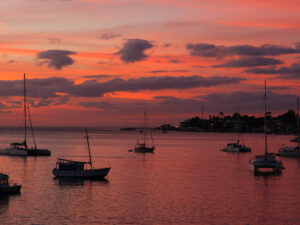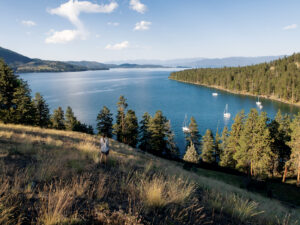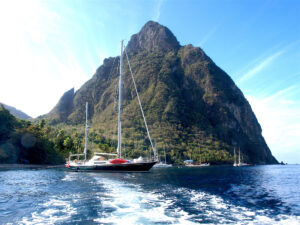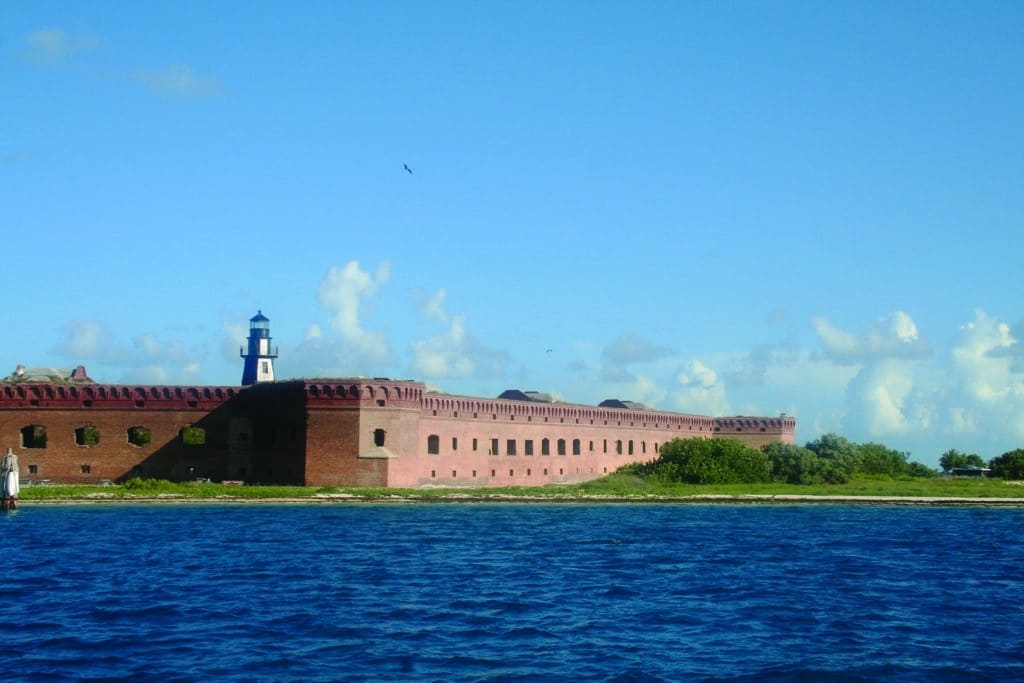
Early last summer I woke in a sweat, haunted again by a recurring nightmare: the Nightmare. It is Florida in the year 2050. Golf courses stretch from coast to coast. The fertilized greens curve past strip malls, condos and gated communities. Vast stretches of saw grass, cypress and mangrove are paved. The last Florida panther is stuffed.
Sadly, the nightmare isn’t so far from reality. My greatest worry is that my boys, now 10 and 12, will live to see this day, and be pinned down by the weight of remorse. So lately, I’ve been taking any excuse to explore the state’s few last pockets of wilderness. Like the wise Mr. Miyagi in The Karate Kid, I want to gird them for the final wax-on, wax-off showdown with the bulldozers. If I succeed, my sons will be among the last defenders of the fragile peninsula where I was raised. If I fail — well, there’s always Montana.
Instilling a sense of impending doom in one’s children is a tough act to balance. You don’t want to depress them too much. I’ve tried to leave an avenue of hope by framing our search for lost wildness as a hunt for fields of battle that might give an eco-warrior the upper hand.
“Location, location, location,” I remind Ben and Jake. “You don’t want to wind up like the French at Dien Bien Phu.” They roll their eyes extravagantly when I begin talking like that. After several weeks of scouring the map of Florida for our Masada, I settled on the brick ramparts of Fort Jefferson in Dry Tortugas National Park, about 70 miles west of Key West. Constructed in the 19th century to guard the Straits of Florida, the hexagonal fort clings to an eroding coral island, Garden Key, one of seven small, mostly barren islands that make up all the dry land in the park.
In addition to their national park status, the Dry Tortugas have several impediments to development: The summer heat is oppressive, even for the hardiest retiree; there’s not enough turf for a golf course; and the nearest CVS lies 75 miles across wreck-strewn waters. Given these obstacles, you could say my fears are unfounded, but as I’ve learned after years of living in Florida, there’s no stopping the cranes and bulldozers. And so I pin my hopes on the Dry Tortugas, where my boys will be stationed with laser guns — or whatever eco-warriors wield in 2050 — in hand. One thing is certain: They will need to be well armed.
As the name suggests, the Dry Tortugas have nary a drop of fresh water. The islands are relatively barren, with only palm trees, vines and hardy shrubs adding a touch of green. Because there’s no silty runoff, the coral reefs thrive in crystal water. The almost-extinct green sea turtles — from which the name “Tortuga” comes — lay eggs on the beaches. The anchorage at Garden Key rings with the cries of thousands of nesting sooty terns; their calls keep light sleepers awake with an incessant cellphone-like chirp. The islands’ path to national park status began, oddly enough, with 30,000 tons of bricks. In 1837, Garden Key was incorporated into the United States Coastal Defense System, an expensive and barely used network of coastal forts erected to defend against invaders who never came.
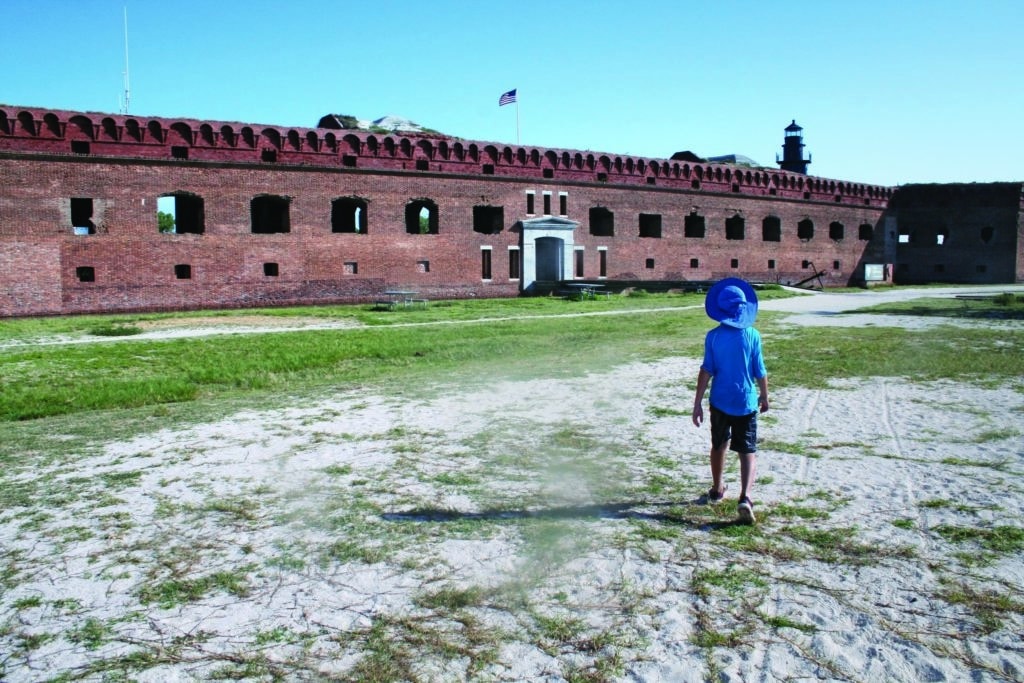
Obsolete before it was fully completed, Fort Jefferson was converted into a prison. Its most infamous guest was Dr. Samuel Mudd, who treated Lincoln’s assassin, John Wilkes Booth. By the end of the century, the fort was abandoned, effectively left to the turtles and birds. With the human population booming in nearby Key West, they didn’t have a chance.
In 1908, when egg-hunters were on the verge of wiping out the terns, Congress designated the area as one of the country’s first wildlife refuges. Forty-six percent of the area is now designated as a Research Natural Area, where even scientists are prohibited from poking and prodding the wild inhabitants. The sanctuary status creates a baseline for scientists studying the marine ecosystem, a living reminder of what the Florida Keys were like before the bridges.
Temperatures are most comfortable in winter (the average is 75 degrees), but I prefer early summer, when calm waters are perfect for snorkeling with the park’s most conspicuous residents, goliath grouper. Weighing more than 300 pounds, these submarine giants make regular rounds through the anchorage at Garden Key. They gaze up at swim platforms with their mouths gaping, like giant bulldogs begging for scraps.
Seaplanes and a high-speed ferry arrive daily from Key West, dropping off campers and day-trippers. For those of us left to our own means, which in my case meant an 18-year-old loaner boat, getting there requires stocking up, and something I’ve never been very good at: planning.
Our voyage began at the Longboat Key Club near Sarasota, on the southwest coast of Florida, 160 miles due north of the Dry Tortugas. The boat was a 42-foot Endeavour, aptly named Lost Boyz. It belonged to a friend, Robert Helmick, who, for reasons I didn’t understand until it was too late, offered out of the blue to let me borrow it for the trip. When I arrived at the newly constructed, well-manicured marina, three blue herons hunted in the mangrove marsh, an osprey circled overhead, and a bulldozer rested on the golf course under construction outside the marina — another portent of Florida’s end times.
If I’d looked closer, I could have recognized that the Endeavour was also a work in progress. I would have wisely allowed it another year to rest in the marina, where the only threats were tropical storms and the uncannily precise sea gulls. But between the boys’ sports and school, and my busy work schedule, chances for spontaneous summer adventures had become rare. I didn’t want to miss this one. As my Kansas-bred grandmother used to say, “Take the cookies when cookies are passing.” Helmick put it more bluntly. “You might just keel over with a heart attack tomorrow,” he said.
A powerboat builder with his own line of skiffs and 30 years in the marine trade, Helmick is a walking Wikipedia when it comes to fiberglass construction. I’d known him since high school in Miami, and it was spooky how little he’d changed. His face was weathered by years in the sun, but he’d somehow escaped the calcifying fog that hangs over Florida’s Geezer Coast.
“Are you going to stop at the Galapagos, or go straight to Tahiti?” he asked sarcastically as I unloaded the second cartload of gear for the voyage. He eyed my charts. “We got a chart plotter, you know. It blinks out every now and then, but just wait a few minutes and it comes back on.”
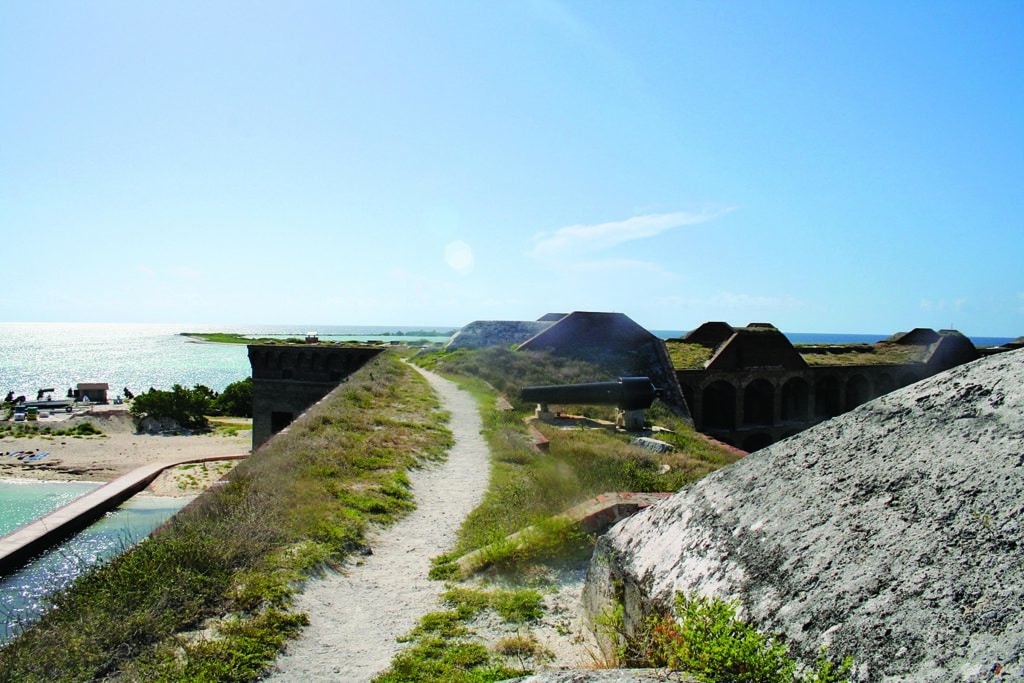
As I would learn during our passage south, Lost Boyz was astoundingly well equipped with gear that blinked out. My role, I later surmised, was to serve as an unwitting beta-tester. In the pre-departure excitement, though, I felt guilty pointing out any faults, like the proverbial jerk on the flight to Honolulu complaining about stale peanuts.
But I did worry; for one, there was the boat’s sketchy history. Helmick and his 14-year-old son, Cameron, had resurrected it from a marina near Cape Coral, where it had sunk at the dock. Doing all the work themselves, the pair had installed a new Yanmar, replaced the fuel tank, updated the plumbing and rewired most of the electrical system. I didn’t doubt the quality of their work; it just didn’t seem, well, finished.
Looking back, I should have listened more closely as we went over the boat’s systems: The bilge pump switches on for no reason — just ignore it. Those small house batteries are fine. The fridge draws nothing, nothing! That furling line? It’s only frayed at the end. But in my head, the islands were calling, and Helmick’s voice seemed no more alarming than the sound of waves on a beach. Besides, I had more pressing concerns, like the crew.
Knowing from experience that two dads are much better than one (see “Daddy Diaries,” March 2012), I invited Andrew Tanner and his 12-year-old son, Sebastian, to join my boys and me. Andrew, who runs a successful solar energy company in Sarasota, was not my first choice. Not because I didn’t regard him as good crew, but because he had been cursed. During the past several years, any sailboat that fell under his command had splintered and sunk.
I didn’t blame him for the losses. Andrew was intent on taking up sailing, but he had no time to master the nuances of keeping a boat afloat. His first one was a 24-foot San Juan that dragged at its anchor, fetching up on concrete piles near his home. His second boat, a MacGregor 23, sunk in a matter of seconds when the transom ripped off. Some might call this bad luck, but to those who’ve been around sailing for a while, it is a familiar hex: notenoughcashitis, better known as the curse of the $1,000 boat.
I called Andrew to invite him one Saturday. He’d just come back from a trip to the state capital, where he’d been trying to convince the high and mighty that maybe, just maybe, the Sunshine State might be a sensible place to encourage solar energy. His mood brightened at my suggestion.
“I hope you know what you’re getting into,” he said. “You remember my luck with boats.”
“I’m not worried,” I lied. “It’s not your boat, so I’m pretty sure the curse doesn’t apply.” I didn’t tell him what I was thinking: Thank goodness the boat isn’t mine.
The first sign of trouble came when we were 40 miles into the Gulf of Mexico off Fort Myers, about 10 hours into the 26-hour passage.
My younger son, Jake, poked his head up through the companionway, looking worried. “Dad, what’s that beeping sound?”
It had been a long, hot motorsail since leaving Sarasota. Andrew and I were in the cockpit discussing watch schedules. Ben was napping below. Andrew’s boy, Sebastian, who reminded me of a pint-size foreign diplomat, was sitting in a corner of the cockpit staring at the horizon, fighting off his initial seasickness. After three hours of this, he had apparently experienced a transformation worthy of a New Age self-help book. His credo went something like this: Be thankful, truly thankful, for every moment you’re not puking. (“Today is another great day! I’m not throwing up!” became his mantra for the trip.)
I turned the helm over to Andrew, went below, and peered into the bilge. A steady stream of water flowed from the aft cabin and spilled into the sump. I dabbed my finger in it. Salt. That ruled out my first guess, the icebox drain. Maybe the stuffing box, I thought?
I moved into the aft cabin, where Ben slept, and lifted the floorboard. The dripless shaft seal was doing its job, but a stream of the clear water snaked from some spot farther aft. I was mystified.
I turned my attention to a compartment under the air-conditioning compressor in the port quarter. I poked a screwdriver at a seeping gap in the joinery. Water spurted out, as if I’d punched a hole in a fish tank. It was worse than I thought.
Becoming more frantic, I dug into Robert’s toolbox, found a hammer, and began tearing at the compartment that hid the source of the leak. Long, fractured strips of veneer sailed through the cabin. Ben didn’t even stir.
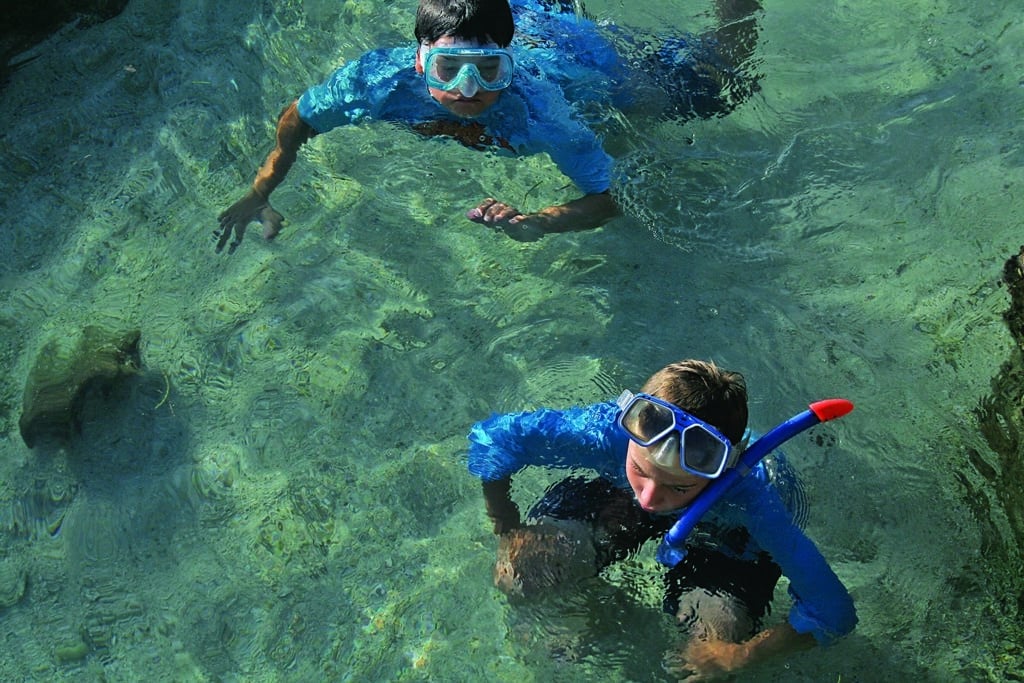
After three blows, I’d ripped open an armhole. Blindly reaching in, I felt a pool of water, a through-hull without a shutoff valve, and then a hose pulsing out water. I pried and whacked some more until I could shine a flashlight on the leak. Water pumped through a long crack in the hose that drained the propane locker. I stemmed the flow with duct tape, but the sponginess of the hose convinced me to seal the through-hull completely. We stopped the boat in calm water. The outlet floated just above the waterline, so I slipped overboard with a tapered plug while Andrew, who seemed unnaturally calm, kept an eye out for sharks. (One had already consumed half a tuna we’d reeled in earlier that day.)
A few seconds later, I scrambled up the transom ladder. “Just a small leak,” I told him. “Fixed now.”
Andrew’s face was hard to read. He seemed only mildly interested. “Of course,” he said.
Curse or no curse, there are clear advantages to sailing with a man accustomed to sinking boats.
That night the moon was full, and at midnight something magical occurred. The air was supersaturated, thick with a haze that caught every glint of moonlight. The sky and sea took on the same silver sheen; the horizon disappeared. I was sailing through the blankness of space, and couldn’t escape the feeling that Lost Boyz was sinking into the emptiness — and we were all going down with it. I was thinking about my oldest son, Ben, who was moving into that age when a boy learns to stand on his own. He sees that his parents are far from perfect, and that they don’t have all the answers. I was thinking about the challenges ahead when he emerged through the companionway and rubbed his eyes.
He climbed out into the cockpit, sat beside me, and looked around at the silver night. “Wow. This is eerie. Is it my imagination, or are we sinking, Dad?”
I was explaining how, no, it just seemed that way — refracted light, I said — when a dolphin broke the surface and gave us both a start. It left a trail of silver bubbles as it shot off into the night.
The next morning we were standing inside the parade grounds at Fort Jefferson, a broad expanse of weeds interrupted by the brick arsenal and barracks ruins. Except for a couple of biologists throwing a Frisbee, the field was empty. Sebastian read an interpretive sign describing the history of the fort and its construction. “Sixteen million bricks,” he said, staring at the high ramparts surrounding us. “That’s a lot of bricks; it took them 30 years to build it. And they didn’t even finish!”
As we wound our way around the fort, the story of Fort Jefferson’s demise unfolded: Too hot. No water. Hurricanes. In this small skirmish between man and the environment, the environment had unequivocally won.
For the boys, the highlight was the elaborate furnace used for heating cannon shot, the ultimate hot potato, to be launched at ships. For me, it was the Technicolor sunset view from the fortress walls. Although the site officially closes at sundown, the park rangers bend the rules to allow visitors to watch the sun slip below the horizon. In stark contrast to the circus antics at Mallory Square in Key West, the end of the day on the Dry Tortugas is a solemn affair, accompanied only by the cry of sea gulls and sooty terns.
The following day we waited for slack tide to snorkel the shallow waters surrounding Garden Key, where a skirmish of a different sort was unfolding. Thousands of tiny glass minnows formed a solid cloud around the rusting iron gridwork of the fort’s coaling dock, attracting schools of snapper, snook and 100-pound tarpon. This was Sebastian’s first time with a mask in salt water. He and my boys watched wide-eyed as the giant tarpon glided by like silver submarines.
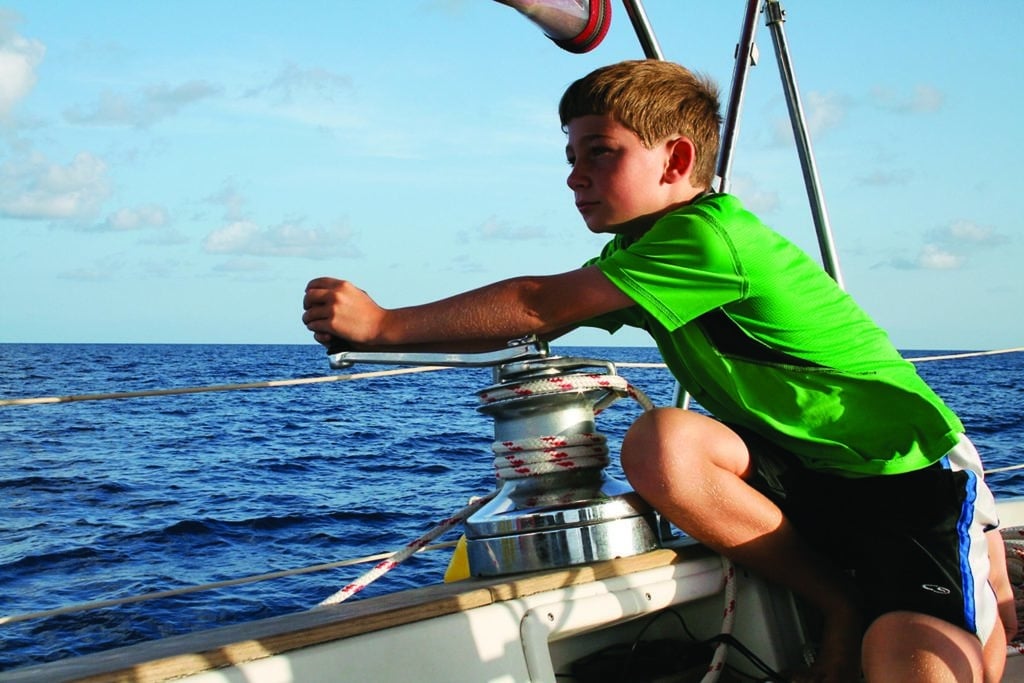
On our third day, we slipped over to Loggerhead Key, where a century-old lighthouse still warns mariners off the reef. A small team of researchers live full time in a two-story block home that once housed the lighthouse keeper. One of the researchers welcomed us to the island, reminded us of rules against touching or taking, then retreated to the shade of the cottage, where a hammock was strung on the front porch.
A soft white strand on the island’s west side recalled beaches I’d known in the Bahamas, as did the mouth-watering marine life inhabiting the nearshore reef. Dinner-size hog snapper, Nassau grouper and a dozen Florida lobsters tucked under the rim of the reef. Watching as Jake dove down again and again, fascinated by the lobsters under the shelf, I realized something inside me had changed since my last trip to the Keys: I didn’t yearn for a net or spear.
Like many of the coastal forts built in the 19th century, Fort Jefferson never saw any military action. The closest it came was when a band of Confederate soldiers tried to take it at the start of the Civil War. The fort’s commanding officer issued what any mom would recognize as the “I’m counting to 10” threat. The Yankees had not yet been stocked with ammunition, but the Confederates fell for the bluff and sailed back to Key West for cover.
The battle that intrigued me most, though, was the unseen one between steam-powered vessels and sail.
After years of studying the many wrecks around the Dry Tortugas, archaeologists have discovered evidence of just how desperately the trading ships of the Florida Keys tried to hold on to their routes in the face of competition from steam. Owners piled on sail and reduced ballast and draft. They modified running rigging to allow fewer men to sail bigger vessels. The remnants of these efforts are scattered all across the rocks and shoals. Whether by power or sail, hauling cargo through the Tortugas was a very dangerous game to play.
On our last day in the islands, I took Ben in the dinghy to snorkel one of these wrecks. The name of the 108-foot-long ship has been lost to history; it is simply called Brick Wreck, named for the cargo it carried. It sits in about 6 feet of water, well marked by GPS coordinates. The ship’s 5-foot-diameter propeller lies just below the surface at low tide. While great schools of reef fish gorged on invisible coral polyps, we glided over the ship’s coral-encrusted skeleton. I could imagine its captain caught in a storm, laboring against the tide of change, loaded down with cargo, tons and tons of red bricks.
Our five days in the islands were marked by an unusual high-pressure ridge, but the sail homeward brought the usual summer pattern of calms, sea breezes and squalls. A dark cloud bearing a waterspout skirted past us as Fort Jefferson slipped out of sight, and just as Siesta Key came into view early the next morning, a white squall descended suddenly, inciting a five-alarm fire drill.
By noon we were back in the Longboat Key moorings, among the sea gulls, herons and close-cropped Bermuda grass. The bulldozer had made some progress, moving farther down the course.
A few days later, the Nightmare came again, so real that I couldn’t get back to sleep. In it, the boys were standing on the walls of Fort Jefferson. Ben was wiping sweat from his thick glasses and taking potshots with a BB gun. My younger son, Jake, his hair already thinning with age, was throwing whatever he might find: sticks, stones, bricks. The barges and dredges kept coming, but the boys seemed hopeful, almost happy. They had the advantage of higher ground — and they had lots and lots of bricks.
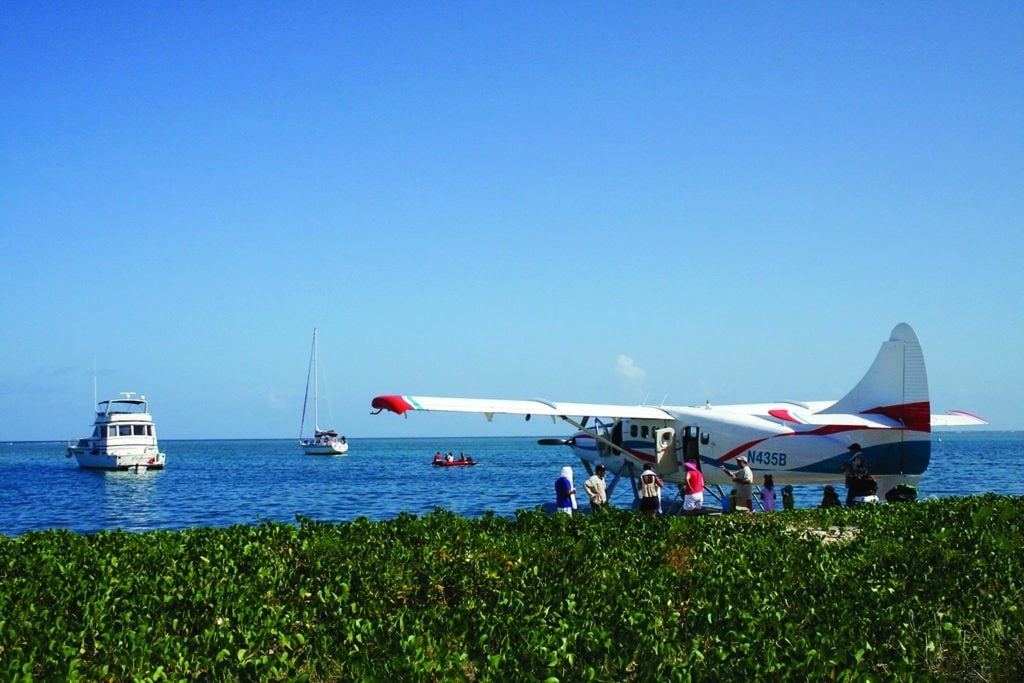
When he’s not jousting with bulldozers in the Florida wetlands, former Cruising World senior editor Darrell Nicholson can be found sailing near his home in Sarasota, Florida. Darrell is the editor of Practical Sailor magazine.

